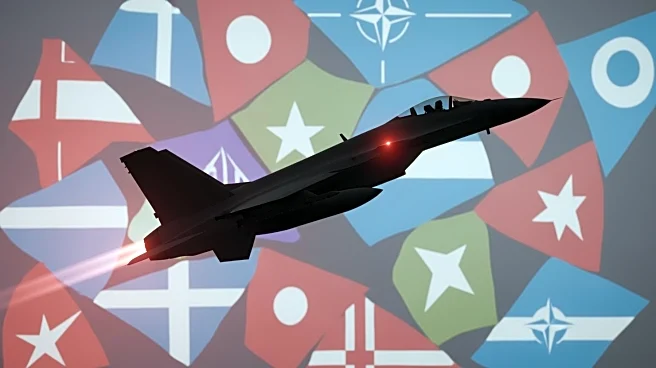What's Happening?
A Rand Corporation report has identified significant interoperability challenges among NATO air forces, particularly concerning the maintenance and support of common aircraft models like the F-35 and F-16.
Despite flying similar jets, differences in variants, support equipment, and procedures hinder seamless cross-servicing among member nations. The report highlights that some NATO members, such as Poland, Slovakia, and Bulgaria, operate Soviet-era fighters, complicating compatibility with Western aircraft support equipment. The U.S. Air Force's Agile Employment Concept, which requires mobility and flexibility, is affected by these interoperability issues. The study suggests establishing dedicated units to oversee interoperability with allies, aiming to enhance European airpower agility and confidence during crises.
Why It's Important?
Improving interoperability among NATO air forces is crucial for enhancing European defense capabilities. The ability to service U.S. aircraft at partner airbases using local personnel and equipment would make operations more agile and scalable, reducing logistical burdens. This would also lower costs for maintaining limited capabilities across small European fleets. Enhanced interoperability would strengthen NATO's collective defense posture, making air forces more resilient and capable of rapid response in crisis situations. The report underscores the need for better communication and coordination among stakeholders to achieve these goals.
What's Next?
The Rand report recommends the U.S. Air Force establish units focused on partner interoperability, requiring regular interaction with headquarters and access to relevant data. This initiative could lead to significant improvements in cross-servicing capabilities, potentially transforming NATO's airpower dynamics. As NATO members work towards resolving these issues, the alliance could see increased operational efficiency and reduced vulnerability to threats. The implementation of these recommendations would require collaboration among NATO members and adjustments to existing policies and procedures.











